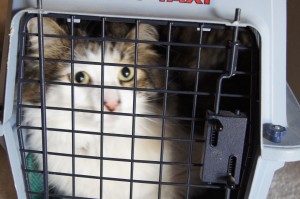 Many families view their pets as four-legged family members. The average American pet owner will spend between $150 and $275 on pet-boarding services in 2011 according to the American Pet Products Association. As more and more lodging becomes pet friendly, many pet owners are taking their pets with them when they travel.
Many families view their pets as four-legged family members. The average American pet owner will spend between $150 and $275 on pet-boarding services in 2011 according to the American Pet Products Association. As more and more lodging becomes pet friendly, many pet owners are taking their pets with them when they travel.
Traveling safely with your pet in a car
When traveling with your pet, there are a few basics to remember:
- Buckle up – according to a 2009 survey by the American Pet Products Association, 61 percent of pet owners do not secure or restrain their dogs in a moving vehicle. Unrestrained dogs can distract the driver, a known driving hazard. Unrestrained pets can also become seriously injured or cause serious injury to others in a car accident. Just like ensuring your kids are buckled up, it’s important to buckle up your pets. A number of dog seat belts and carriers are available for purchase at any pet products store. Of course, traveling cats are far better off secured in a carrier.
- Stay hydrated – just as with humans, pets have to stay hydrated because hydration is how they remain cool and avoid heat stroke. When the weather heats up, dehydration and heatstroke in pets is far more common because of their fur coats. Portable water bowls are an easy packing item to ensure that your pets receive enough water throughout the day while traveling.
Traveling safely with your pet in an airplane
When traveling with your pet in an airplane, it’s important to understand:
- Pets who are small enough can travel in the cabin of the airplane (under the seat in front of you) in a pre-approved container.
- Pets who are too large to fit under the seat can travel in the cargo area in containers that are strong and well ventilated. These containers must be large enough for the dog to stand up, turn around, and lie down comfortably.
As always, check with the airline for specific requirements for carriers, and check the rules at your destination for vaccinations, quarantines, etc. before you travel.
